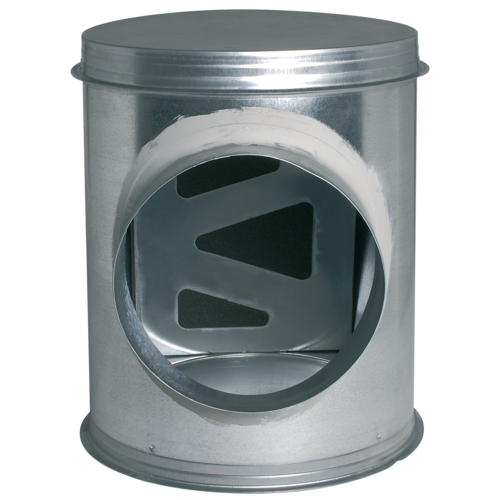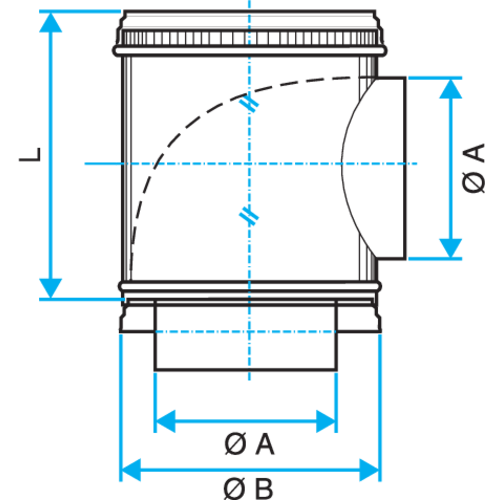Acoustic and Aeraulic T-piece branch connector: CP2A
Connector
Acoustic and Aeraulic T-piece branch connector: CP2A
Connector
The CP2A branch connector provides a junction and accessibility to the vertical collector system and horizontal ducting, improves acoustic and aeraulic performance.

Acoustic and Aeraulic T-piece branch connector: CP2A
The T-piece acoustic and aeraulic branch connector (CP) is a galvanised steel accessory used to join the vertical collector system and horizontal ducting while enabling accessibility to the vertical riser and horizontal ducting as per the requirements of DTU 68.1 and 68.2. It is specifically designed for risers opening out into attics or flat roofs of commercial and multi-occupancy residential buildings, for which the airtight reading is made before the T-piece is installed (> 95% of cases). The CP2A T-piece acoustic and aeraulic branch connector is fitted with a stop ring on the unit body to hold the plug in a stable position and limit the risk of leaks. The aeraulic properties of the CP2A T-piece branch connector reduce the negative pressure required for the fan and enable the use of less powerful fans, which generate less noise and consume less energy.

The + products
- exclusive CP2A (ALDES patent) - reduced fan consumption,
- 35% less pressure loss compared to a standard CP,
- improved noise attenuation: 7 dB(A) on noise radiated from the fan (3 dB(A) better than a standard CP connector).
- reduced fan consumption,
- access to riser preserved.
- range available from diameter 125 to 500.
-
performance of CP2A compared to standard CP connector:
- acoustic: acoustic foam B-s1,d0 offering high attenuation of fan noise (by 7 dB(A), or 3 dB(A) better than a standard CP),
- aeraulic: sheet metal deflector offering tool-free removal, reducing pressure losses by 35% or -7 Pa at 4 m/s.
- galvanised steel compliant with EN 10346 ensuring regularity of the coating.
- material compliant with requirements of DTU 68.3: 2013-06 P1-1: “Mechanical Ventilation Installations”,
- M0 fire certification.
- easy assembly of interlocking accessories: ducts are female, accessories are male,
- Final seal requires sealant and/or perforated strip,
- attached to duct using self-tapping screws (4 to 6 depending on diameter),
- if the air tightness reading is made after the T-piece connector is installed, use a CPT or CPT2A,
- installation requires a flat roof penetration sleeve: FT.
-
to install a deflector in an existing CP T-piece:
- identify the type of T-piece installed: header diameter, external diameter (often marked on plug),
- use the appropriate deflector for the T-piece installed,
- remove the plug,
- position the lower part of the deflector on the bottom of the T-piece (galvanised part in contact with the airflow),
- bend the deflector to insert the upper part in the connector,
- replace the plug and ensure the seal is airtight.
-
to remove a deflector for header servicing access:
- remove the plug,
- grasp and press the upper part of the deflector then withdraw it from the T-piece,
- remove the deflector and perform servicing operations,
- re-position the lower part of the deflector on the bottom of the T-piece (galvanised part in contact with the airflow),
- bend the deflector to insert the upper part in the connector,
- replace the plug and ensure the seal is airtight.






